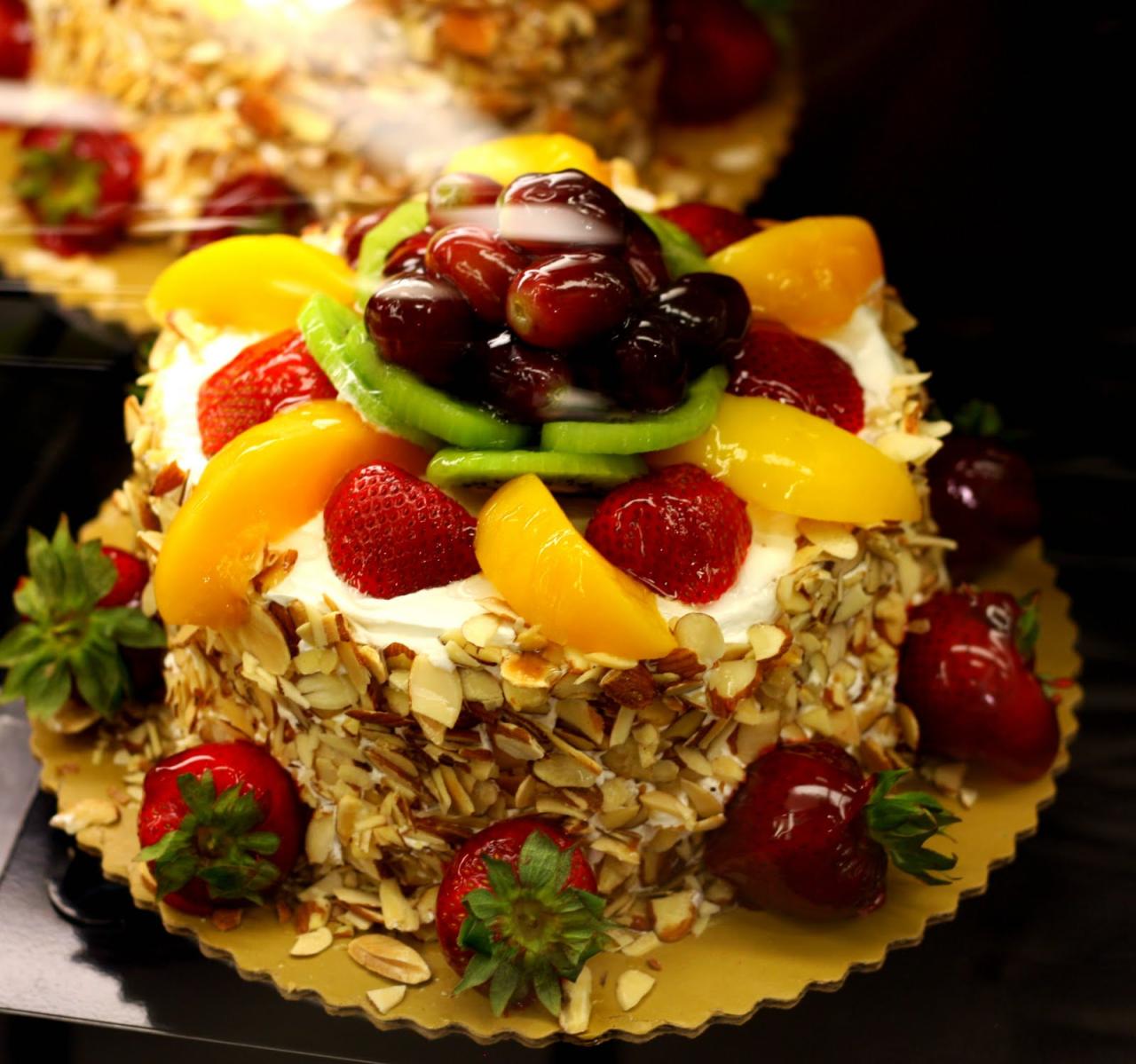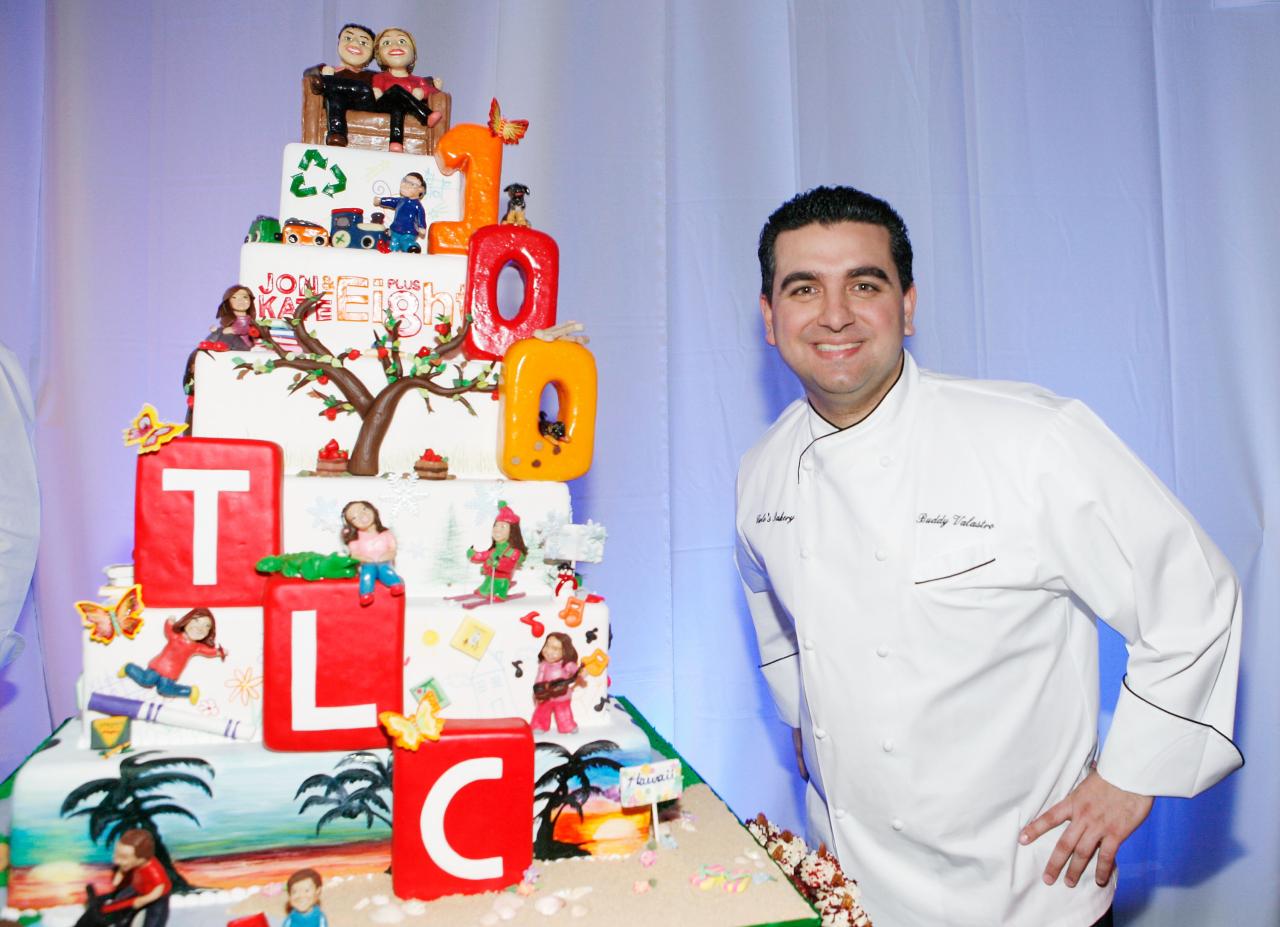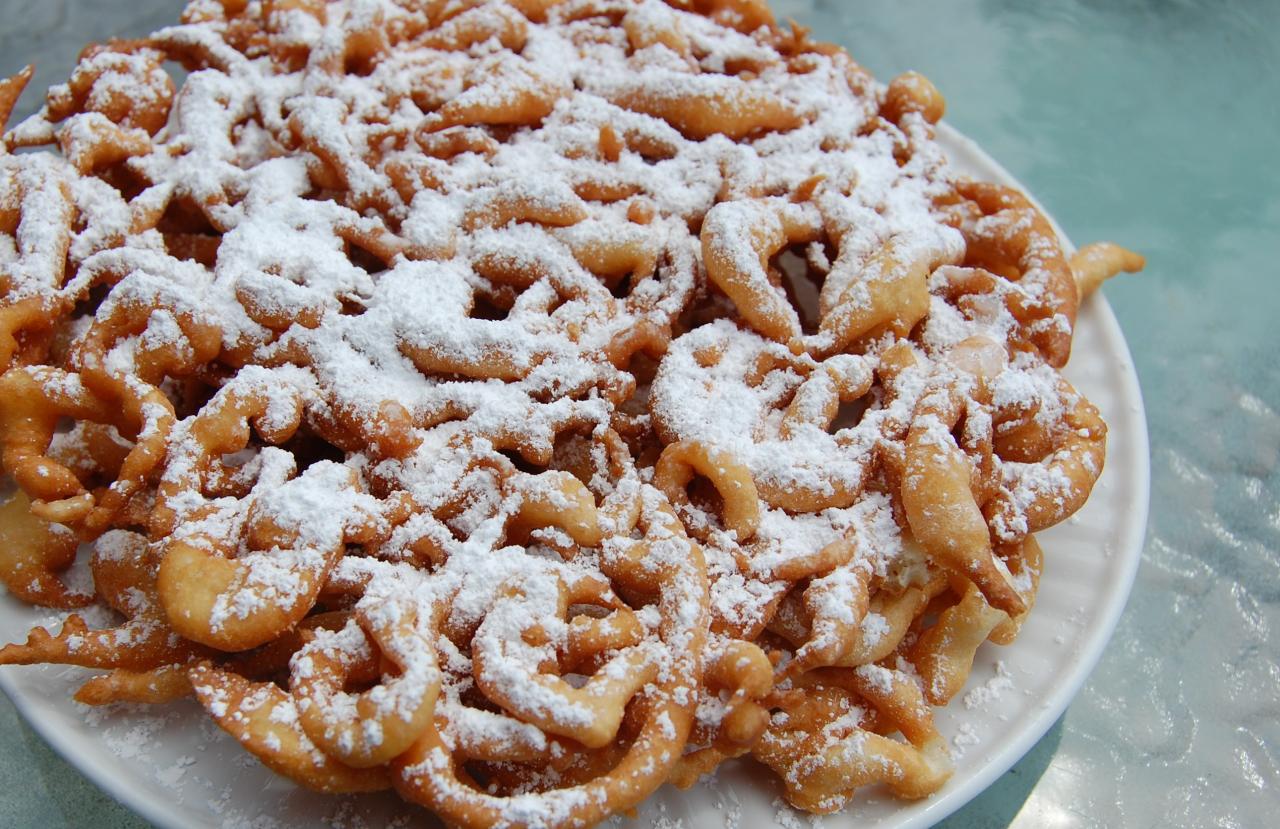Fruit cake, a dense and richly flavored confection, has a long and fascinating history. From its humble origins to its modern-day variations, fruit cake has captivated taste buds and played a significant role in cultural traditions across the globe. This article delves into the evolution of fruit cake, exploring its ingredients, preparation techniques, and cultural significance.
We’ll journey through time, uncovering the origins of fruit cake and tracing its evolution from ancient times to its present-day forms. We’ll also examine the diverse ways in which fruit cake is celebrated in various cultures, exploring its symbolism and its place in folklore and popular culture.
The Rich History of Fruit Cake
Fruit cake, with its dense, sweet, and often boozy character, is a dessert that has been enjoyed for centuries. Its origins can be traced back to ancient times, and its evolution has been shaped by cultural influences, culinary innovations, and historical events.
If you’re looking for a simple and classic dessert recipe, look no further than a pound cake. This rich and buttery cake gets its name from the fact that it traditionally uses a pound each of butter, sugar, eggs, and flour.
It’s a versatile recipe that can be enjoyed on its own or dressed up with glazes, frostings, or fresh fruit.
Early Origins and Cultural Significance
The earliest forms of fruit cake can be found in ancient civilizations. The Egyptians, for example, baked cakes with dates, figs, and nuts, often using honey as a sweetener. In ancient Rome, cakes with dried fruits and nuts were common, and they were often served at celebrations and festivals.
These early forms of fruit cake were not necessarily the dense, rich cakes we know today, but they laid the foundation for the fruit cake tradition.
Evolution of Recipes and Ingredients
Over time, fruit cake recipes evolved with the introduction of new ingredients and culinary techniques. The use of spices like cinnamon, nutmeg, and cloves became common in medieval Europe, adding a distinct flavor profile to fruit cakes. The development of sugar refining in the 16th century made sugar more accessible, allowing for sweeter and more elaborate fruit cakes.
The addition of alcohol, such as brandy or rum, also became popular in the 17th and 18th centuries, contributing to the cake’s long shelf life and adding a unique flavor dimension.
Historical and Cultural Influences
Fruit cake’s popularity has varied across different regions and cultures. In England, fruit cake became a staple during the Victorian era, often served at grand celebrations and as a symbol of wealth and status. In the United States, fruit cake gained prominence in the 19th century, becoming a popular Christmas tradition.
This association with Christmas has continued to this day, making fruit cake a beloved holiday dessert in many parts of the world.
Ingredients and Preparation: Fruit Cake
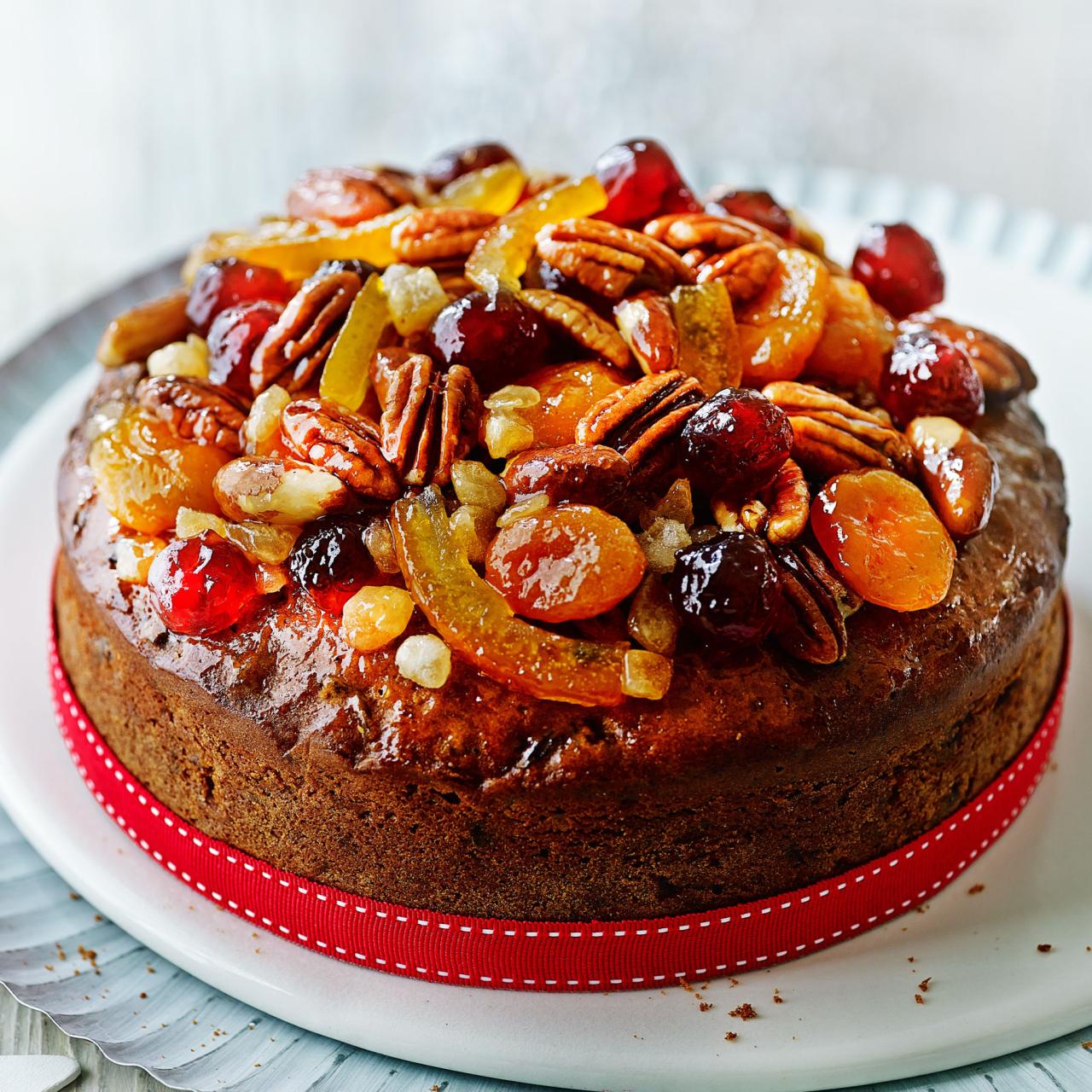
A traditional fruit cake recipe typically includes a combination of ingredients that contribute to its unique texture, flavor, and long shelf life.
Looking for a simple yet delicious dessert? You can’t go wrong with a classic pound cake. It’s a versatile recipe that can be dressed up with frosting, fruit, or even a sprinkle of nuts. The name comes from the fact that it traditionally uses a pound each of butter, sugar, eggs, and flour.
While it’s a bit of a time commitment, the result is a moist and rich cake that’s perfect for any occasion.
Essential Ingredients
- Fruits:Dried fruits like raisins, currants, sultanas, apricots, and cherries are essential components of fruit cake. They provide sweetness, texture, and a concentrated fruit flavor.
- Nuts:Chopped nuts, such as walnuts, pecans, or almonds, add a crunchy texture and nutty flavor.
- Spices:Spices like cinnamon, nutmeg, cloves, and allspice enhance the cake’s flavor profile, adding warmth and complexity.
- Butter:Butter provides richness and moisture to the cake, contributing to its dense texture.
- Eggs:Eggs bind the ingredients together and contribute to the cake’s structure.
- Flour:Flour provides the structural foundation for the cake, giving it its shape and texture.
- Sugar:Sugar sweetens the cake and balances the tartness of the fruits.
- Alcohol:Brandy, rum, or other alcohol is often added to fruit cake, enhancing its flavor, preserving its moisture, and extending its shelf life.
Preparation
Preparing a fruit cake involves several steps, including soaking the fruits, combining the dry and wet ingredients, and baking the cake. Soaking the fruits in alcohol for several days or weeks before baking is a common practice, allowing the fruits to plump up and absorb the alcohol’s flavor.
The cake batter is typically made by creaming together butter and sugar, then adding eggs, flour, spices, and the soaked fruits. The batter is then poured into a greased and floured cake pan and baked until a toothpick inserted into the center comes out clean.
Variations and Styles
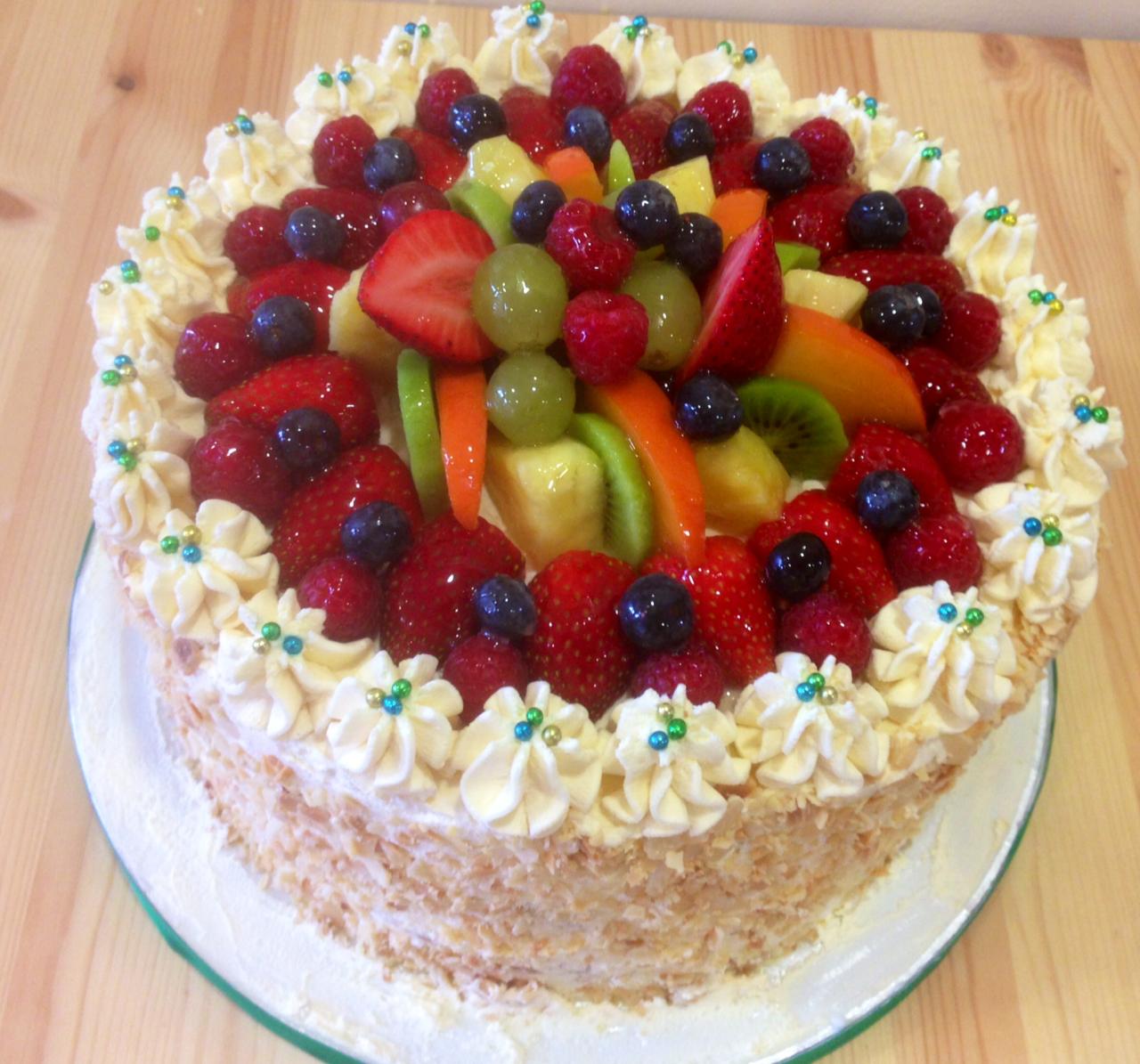
Fruit cake recipes and styles vary widely, reflecting regional and cultural influences. Some variations focus on specific fruits, spices, or baking techniques, resulting in unique flavor profiles and textures.
Regional Variations
- Christmas Fruit Cake:This classic fruit cake is typically made with a rich combination of dried fruits, nuts, spices, and alcohol. It’s often decorated with marzipan or icing and served during the Christmas season.
- Black Forest Fruit Cake:Originating from Germany, this fruit cake features a combination of cherries, chocolate, and kirschwasser (cherry liqueur). It’s known for its rich chocolate flavor and the distinct aroma of kirschwasser.
- Fruit Cake with Specific Types of Fruits:Some fruit cakes are known for featuring specific types of fruits, such as fig fruit cake, apricot fruit cake, or cranberry fruit cake. These variations highlight the unique flavors and textures of different fruits.
Cultural Variations
- Stollen:This German Christmas bread is a type of fruit cake that includes candied fruits, nuts, and spices. It’s often dusted with powdered sugar and enjoyed during the Christmas season.
- Panettone:This Italian Christmas cake is characterized by its light and airy texture and the addition of candied fruits and raisins. It’s typically enjoyed with a cup of coffee or hot chocolate.
Cultural Significance and Traditions
Fruit cake holds a special place in many cultures and traditions, often symbolizing celebration, hospitality, and the sharing of festive meals. Its presence in folklore, literature, and popular culture highlights its enduring significance.
Symbolism and Significance
Fruit cake is often associated with celebrations and special occasions. In many cultures, it’s a symbol of good luck, prosperity, and abundance. Its rich ingredients and elaborate preparation make it a fitting centerpiece for festive gatherings and holiday meals.
Anecdotes and Stories
Fruit cake has inspired numerous anecdotes and stories, often reflecting its place in folklore, literature, and popular culture. For example, the tradition of gifting fruit cake as a Christmas present has been immortalized in numerous stories and poems, reflecting the cake’s association with holiday cheer and generosity.
Historical Connections
Fruit cake’s popularity has also been influenced by historical events and social movements. The rise of globalization and international trade in the 19th and 20th centuries led to the spread of fruit cake recipes and traditions across the world. The cake’s association with Christmas has also been shaped by the evolution of holiday traditions and the increasing popularity of Christmas celebrations worldwide.
Fruit Cake in Modern Times
Fruit cake continues to be enjoyed in modern times, although its popularity and perception have evolved with changing culinary trends and tastes.
Contemporary Consumption
Fruit cake is still a popular dessert, particularly during the holiday season. However, its consumption has declined in some regions due to changing dietary preferences and the emergence of newer dessert trends.
Perception and Acceptance
Fruit cake’s perception in modern times is often influenced by its traditional association with holidays and its dense, rich flavor profile. Some people find it to be a nostalgic and comforting dessert, while others may perceive it as overly sweet or heavy.
Trends and Innovations, Fruit cake
Despite its traditional roots, fruit cake is undergoing a resurgence in popularity, driven by a renewed interest in classic desserts and innovative culinary approaches. Modern fruit cake recipes often incorporate new ingredients, flavor combinations, and presentation styles, reflecting contemporary culinary trends and tastes.
Outcome Summary
Fruit cake, a timeless treat with a rich history, continues to enchant and delight. From its humble beginnings to its modern-day interpretations, fruit cake remains a symbol of celebration and tradition. As we move forward, we can expect to see even more innovative and exciting variations of this beloved confection, further solidifying its place in the culinary landscape.



